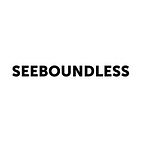Nikon KeyMission 360 First Impressions
Waiting with bated breath:
As a Nikon shooter my entire life, it was enlightening to hear the sometimes struggling camera company announce a 360-degree action camera. Taking the Consumer Electronics Show in Las Vegas by surprise, the KeyMission360 was the first in a line of action cameras Nikon was to release primarily to take on GoPro.
As a 360 storyteller, I couldn’t have been more excited to get my hands on some Nikon glass and not have to worry about stitching multiple cameras together in post.
Originally slated for a Spring 2016 release, Nikon was head of the game. With companies like RICOH and GoPro having limited share of the camera marketplace. Nikon was about to win a piece of the 360 prize.
Then the Kumamoto earthquakes indefinitely delayed production of many of Nikon’s products.
After much waiting and many phone calls and emails to Nikon we finally have the KeyMission 360 six months after its initial launch schedule.
First Impressions:
The Nikon KeyMission 360 solves multiple issues that face 360 shooters today:
- In camera stitching
- Decent audio for natural sound
- Shock/Water proof
- Portability and reliability
Previous to the KeyMission 360 you did not have an easy to use camera that stitches for you that you could rely on for professional productions.
The KeyMission 360 delivers. Fitting inside the smallest camera bags, you can throw it on a monopod, mini tripod or even a magnetic/suction cup mount to get a quick 360 scene.
Better yet, because of the size we can now put this camera from an experience worth seeing.
A true experiential camera:
Unlike other 360 rigs, the Nikon KeyMission 360 is meant to be thrown around, beat up, get wet and even fall off a few ledges here and there.
360 video is meant to bring our audiences not only to new places but to experience things in new places. This camera is meant for new experiences.
The GoPro Omni and larger 360 rigs need heavy support of tripods and monopods making them limited in the places you can put them, and the RICOH Theta is meant to be hand held because of its form factor.
The Nikon KeyMission360 is meant to be places in places that we might not have access to. Nikon is very attuned to how their professional photographers mount remote cameras and get shots no one else thought possible. This same thinking was clearly taken into consideration when designing the KeyMission 360.
Drawbacks:
Stitching in camera is the future of 360 photo and video production, but with new features comes at least one major drawback — there is no way to hand stitch your 360 video in a AutoPano Video Pro or any other stitching software. This means if you have that one shot of something amazing that steps to the side of your rig just a little too close there is no way to avoid the ghosting effect we see on many 360 videos.
Power is the second biggest drawback of the KeyMission 360. It’s battery life is lacking even though it is a self contained unit. Unlike the larger camera rigs made up of many individual cameras, the hope was because this was a single unit it would have much battery life.
Tech Stuff:
The KeyMission does have some pretty impressive specs for a self-stitching 360 camera:
- two 20-megapixel CMOS sensors
- image size of 7744 x 3872 pixels
- supports microSD cards
- CMOS electronic shutter can vary speed from 1/8000 to 1.0 seconds
- battery is removable (1 hour 10 min record time or 230 still pictures)
- 2.5 hours to fully recharge
Recommendation:
Nikon has taken the top spot in entry level professional 360 cameras. The KeyMission 360 beats out the Kodak SP 360 4K in terms of price (half), stitching quality (in camera vs. very unreliable software) and ruggedness (fully water and shock proof).
For any newsroom, production house or even prosumer looking to get into 360 video this is your camera — especially if you happen to teach photography in a journalism or communications program. At $500 a piece with no additional software required this should be standard equipment at any J-School.
